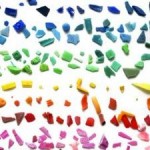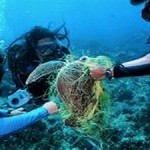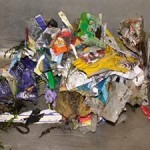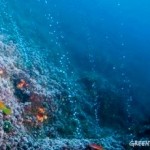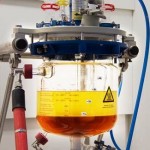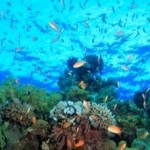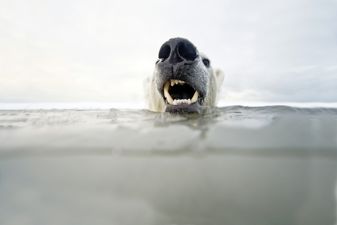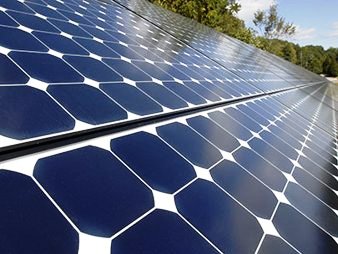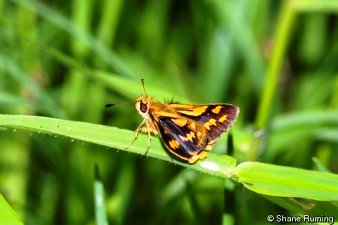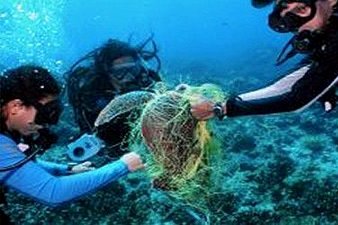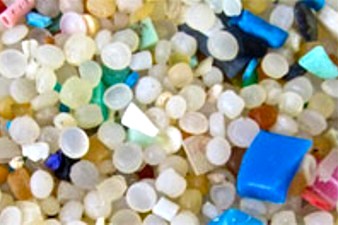
Tiny bits of plastic rubbish could spell big trouble for marine life, starting with the worms, say a team of researchers from the University of Exeter and Plymouth University who report their evidence in a pair of studies in the Cell Press journal Current Biology on December 2.
The marine worms play a key ecological role as an important source of food for other animals.
Work by Stephanie Wright from Biosciences at the University of Exeter found that if ocean sediments are heavily contaminated with microplastics, marine lugworms eat less and their energy levels suffer. A separate report, from Mark Anthony Browne on work performed at Plymouth University, shows that ingesting microplastics can also reduce the health of lugworms by delivering harmful chemicals, including hydrocarbons, antimicrobials and flame retardants to them.
“We believe our study has highlighted the need to reduce the amount of plastic waste, and therefore, microplastics which enter our seas,” says Professor Tamara Galloway of Biosciences at the University of Exeter. “Plastics are enormously beneficial materials. However, if marine plastic pollution continues to increase, impacts such as those demonstrated in our laboratory studies could occur in the natural environment. It is, therefore, important that we prevent the accumulation of plastic and microplastic debris in marine habitats through better waste-handling practices and smarter choices in the materials we use.”
In addition to their role in the food chain, “lugworms also feed on and churn the organic content in sediments, much as earthworms in the soil do,” Wright explains. “If worms in contaminated environments were to reduce feeding levels by an amount comparable to that seen in the lab, it would mean significantly less turnover of sediment. In an area the size of the Wadden Sea, for instance, sediment turnover could drop by more than 130,000 litres each year.”
The microplastic levels used in the two papers approximate those found at highly contaminated sites. There are many other organisms – including starfish, sea cucumbers, and fiddler crabs – that may be similarly affected by the tiny bits of plastic.
Many plastics contain chemical additives, such as plasticisers, dyes, and antimicrobials, which can leach out into sediments and seawater. Microplastics also concentrate water-borne chemicals on their surfaces, such as pesticides and detergents. In other words, the problem with microplastics isn’t just the plastic itself, but the complex mix of chemicals the plastics carry with them.
Plastic debris degrades into ever-smaller pieces, which means that a wider range of organisms can ingest this material, and particles of microplastic are now the most abundant form of solid-waste pollution on our planet.
“These chemicals are persistent, meaning they could accumulate in the tissue of organisms and take a long time to break down,” says Professor Richard Thompson of Plymouth University. “Our laboratory studies provide the first clear evidence that microplastics could cause harm and show that this could result from both the physical presence of ingested plastic and chemical transfer. Our next steps will be to establish the full implications of these findings for organisms in natural habitats.”
Details of the Two Studies:
“Microplastic Ingestion Decreases Energy Reserves in Marine Worms” Stephanie L. Wright, Darren Rowe, Richard C. Thompson and Tamara S. Galloway Current Biology – 2 December 2013 (Vol. 23, Issue 23, pp. R1031-R1033)
“Microplastic Moves Pollutants and Additives to Worms, Reducing Functions Linked to Health and Biodiversity” Mark Anthony Browne, Stewart J. Niven, Tamara S. Galloway, Steve J. Rowland, Richard C. Thompson Current Biology – 2 December 2013 (Vol. 23, Issue 23, pp. 2388-2392)
Source: University of Exeter.

